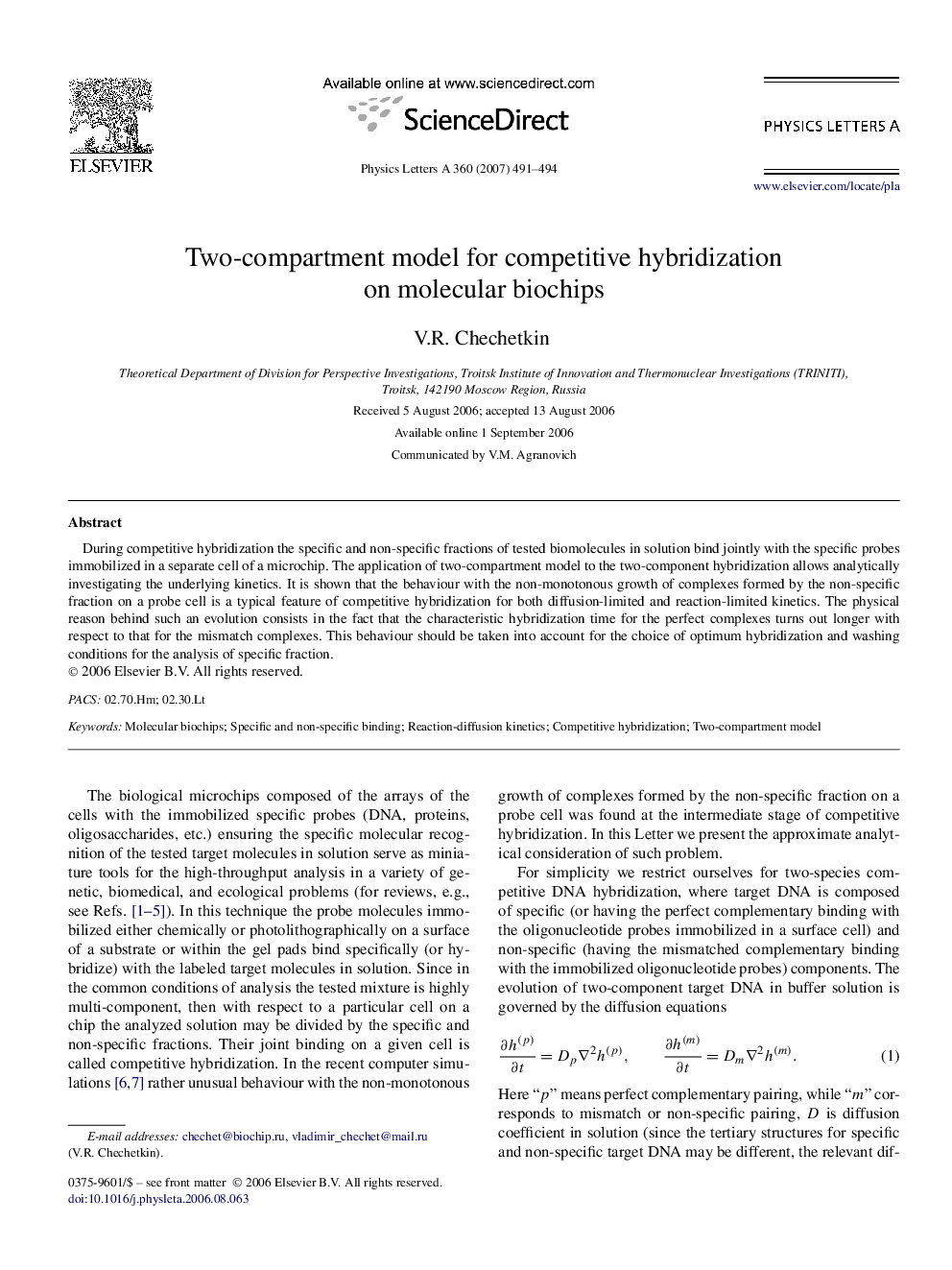| Article ID | Journal | Published Year | Pages | File Type |
|---|---|---|---|---|
| 1862511 | Physics Letters A | 2007 | 4 Pages |
Abstract
During competitive hybridization the specific and non-specific fractions of tested biomolecules in solution bind jointly with the specific probes immobilized in a separate cell of a microchip. The application of two-compartment model to the two-component hybridization allows analytically investigating the underlying kinetics. It is shown that the behaviour with the non-monotonous growth of complexes formed by the non-specific fraction on a probe cell is a typical feature of competitive hybridization for both diffusion-limited and reaction-limited kinetics. The physical reason behind such an evolution consists in the fact that the characteristic hybridization time for the perfect complexes turns out longer with respect to that for the mismatch complexes. This behaviour should be taken into account for the choice of optimum hybridization and washing conditions for the analysis of specific fraction.
Related Topics
Physical Sciences and Engineering
Physics and Astronomy
Physics and Astronomy (General)
Authors
V.R. Chechetkin,
